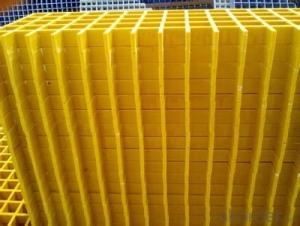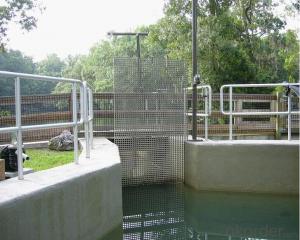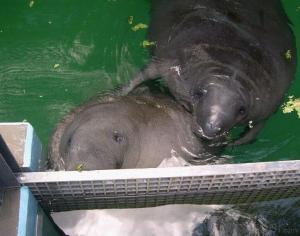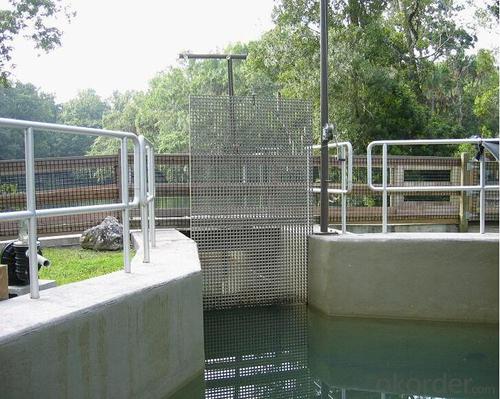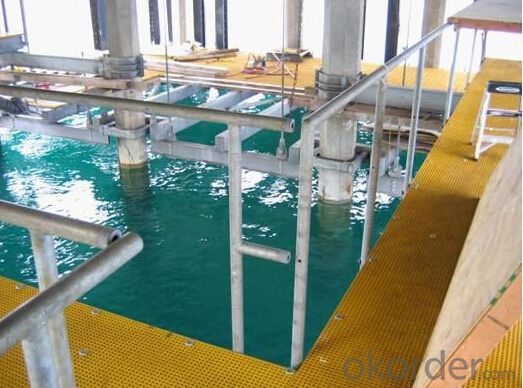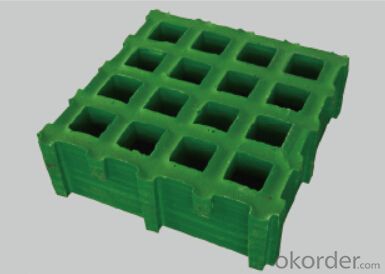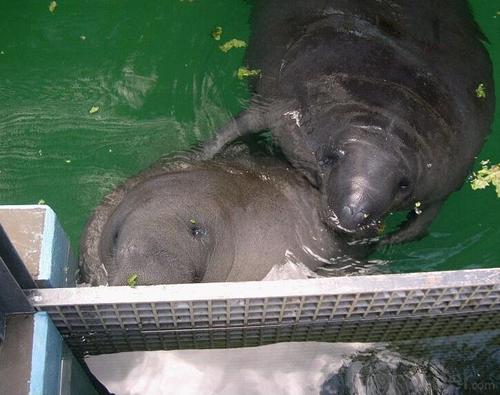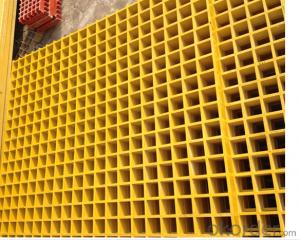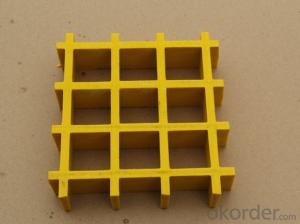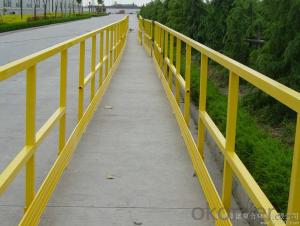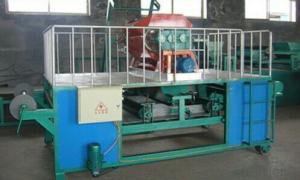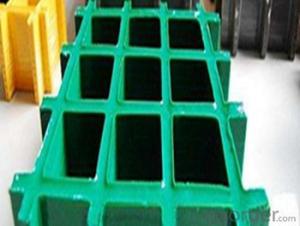FRP Pultrusion Profiles - High Strength Durable Anti-Corrosion Pultruded Fiberglass FRP Grating
- Loading Port:
- Shanghai
- Payment Terms:
- TT OR LC
- Min Order Qty:
- 10 pc
- Supply Capability:
- 8000 pc/month
OKorder Service Pledge
OKorder Financial Service
You Might Also Like
Specification:
FRP molded grating made of vertical and horizontal continuous fiberglass fully soaked in unsaturated polyester resin giving perfect bi-directional mechanical properties. Combining unmatched corrosion resistance with strength, long life and safety, molded grating provide the ultimate in reliable performance, even in the most demanding corrosive conditions. Besides, it is easy to cut and install. CNBM offer the widest selection with panel sizes, colors and slip resistant surfaces, clients can avail FRP grating your specific requirements.
Product Features:
- Light but high loaded strength
- High anti-corrosion and anti-aging
- Easy installation and maintenance
- Low maintenance
- Non-conductive
- Lowest in life cycle cost
- Corrosion Resstance
- Anti-slippery
- Various sizes and color available
Colour Design:
To satisfy customer's design project, CNBM grating offers a wide selection of grating colors to choose from. The standard colors available for fiberglass grating as following:
- Blue
- Red
- Yellow
- Green
- Light Grey
- Dark Grey
Custom colors of fiberglass grating may be available upon request, you can contact us learn more.
Moded Grating Sizes List:
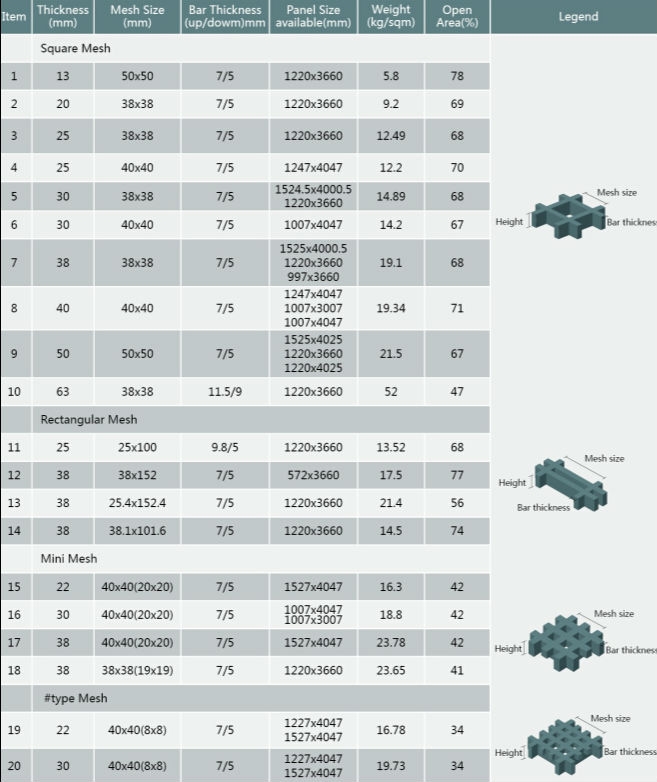
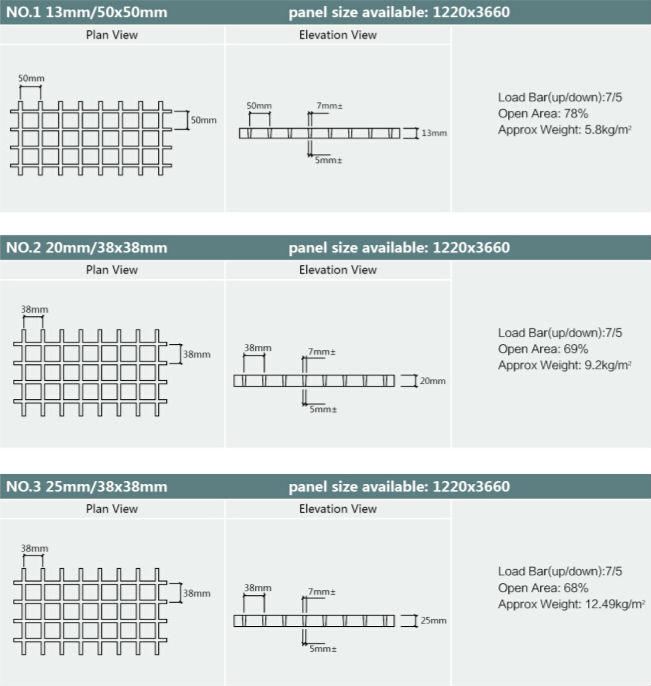

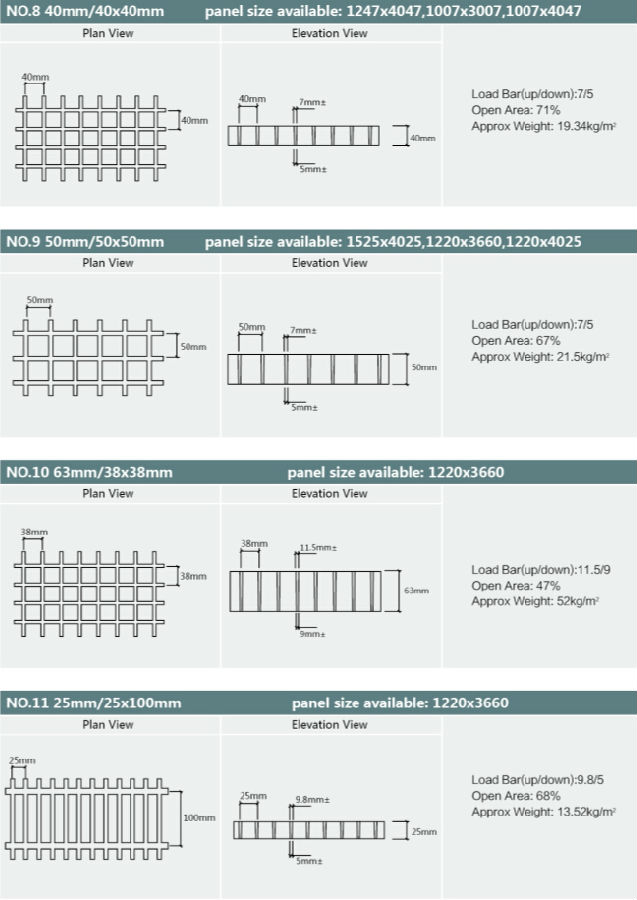
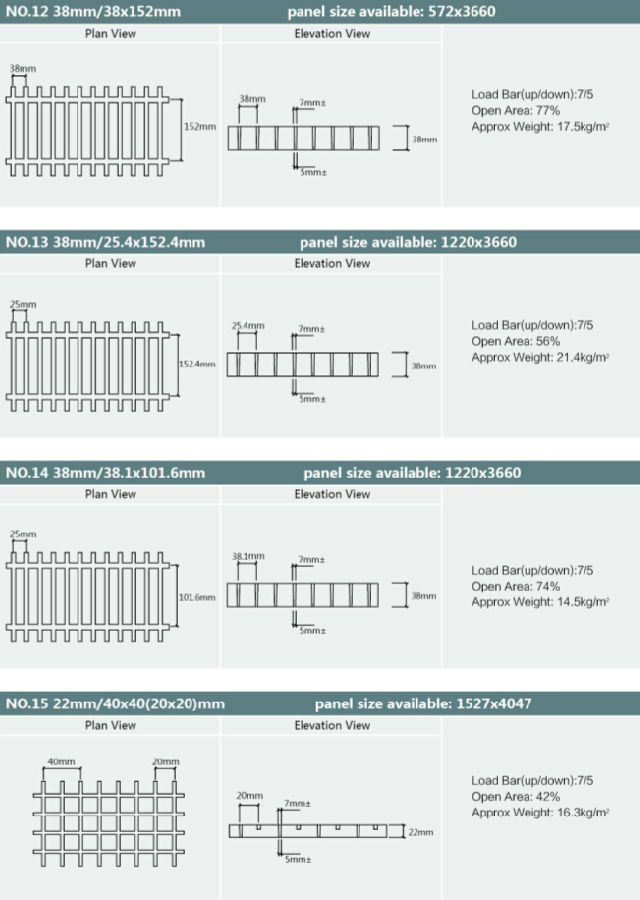
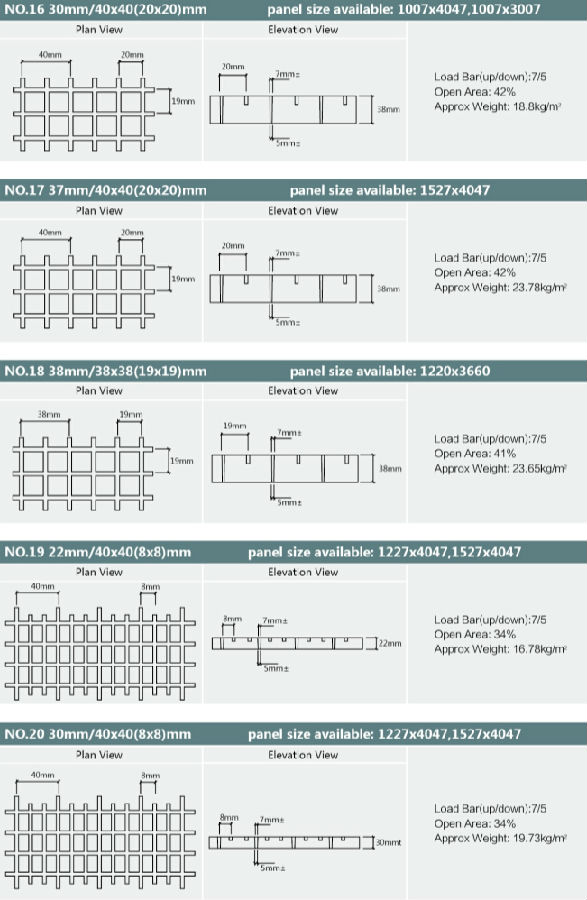
- Q: Can FRP pultrusion profiles be used in the renewable energy sector?
- FRP pultrusion profiles are definitely applicable in the renewable energy sector. They offer several advantages that make them suitable for various applications within the industry. One significant advantage of FRP pultrusion profiles is their exceptional strength-to-weight ratio. As large structures, like wind turbine blades or solar panel frames, are often involved in renewable energy projects, the lightweight nature of FRP profiles can significantly reduce transportation and installation costs. Additionally, their high strength ensures better load-bearing capabilities, guaranteeing the integrity and longevity of renewable energy infrastructure. Another benefit of FRP pultrusion profiles is their resistance to corrosion. Structures in the renewable energy sector are frequently exposed to harsh environments, such as offshore wind farms or coastal solar installations. The corrosion-resistant properties of FRP profiles make them an ideal choice as they do not rust or degrade when exposed to moisture, saltwater, or chemicals commonly found in these environments. This characteristic significantly reduces maintenance and replacement costs, making FRP profiles a cost-effective solution for the renewable energy sector. Moreover, FRP pultrusion profiles offer design flexibility. They can be custom-engineered to meet specific project requirements, allowing for the creation of complex shapes and sizes. This versatility enables the development of innovative and efficient renewable energy solutions, such as aerodynamically optimized wind turbine blades or lightweight support structures for solar panels. In conclusion, FRP pultrusion profiles are well-suited for the renewable energy sector due to their lightweight nature, high strength, resistance to corrosion, and design flexibility. These characteristics make them an excellent choice for various applications, including wind energy, solar power, hydroelectric projects, and more.
- Q: Can FRP pultrusion profiles be used in agricultural structures?
- Yes, FRP pultrusion profiles can certainly be used in agricultural structures. They offer several advantages such as high strength-to-weight ratio, corrosion resistance, and durability, making them suitable for various applications in the agricultural industry. These profiles can be used in structures like greenhouse frames, livestock enclosures, support beams, fencing, and other agricultural infrastructure.
- Q: How do FRP pultrusion profiles handle cyclic loading?
- FRP pultrusion profiles are renowned for their exceptional performance in the face of cyclic loading. The pultrusion process combines unique materials and manufacturing techniques to create profiles that are highly resistant to fatigue and the effects of cyclic loading. One key factor that contributes to the outstanding performance of FRP pultrusion profiles under cyclic loading is their inherent high strength-to-weight ratio. These profiles are created using continuous fibers, typically fiberglass, that are saturated with a resin matrix. This results in a lightweight yet sturdy material that can endure repeated loading without significant degradation or fatigue. Furthermore, the pultrusion process allows for precise control over the fiber orientation and resin distribution within the profile. This ensures a consistent and uniform composition throughout the entire length of the profile. Consequently, FRP pultrusion profiles exhibit excellent load distribution characteristics, reducing stress concentrations and preventing localized failure under cyclic loading conditions. In addition, the corrosion resistance of FRP pultrusion profiles is pivotal in their ability to withstand cyclic loading. Unlike conventional materials like steel, FRP profiles are not susceptible to corrosion-related issues such as rust or pitting. This corrosion resistance guarantees that the profiles retain their structural integrity even when subjected to cyclic loading over extended periods. In summary, FRP pultrusion profiles are purposefully designed and manufactured to withstand cyclic loading conditions. Their high strength-to-weight ratio, uniform material composition, and corrosion resistance make them ideal for applications where cyclic loading is a significant concern. Whether it is in the realm of structural reinforcements, bridges, sporting equipment, or various industrial applications, FRP pultrusion profiles have consistently proven to be reliable and durable under cyclic loading.
- Q: Can FRP pultrusion profiles be used in the automotive industry?
- Yes, FRP pultrusion profiles can be used in the automotive industry. They offer several advantages such as high strength-to-weight ratio, corrosion resistance, and design flexibility. These profiles can be used for various automotive applications including body panels, structural components, and interior parts.
- Q: Can FRP pultrusion profiles be used in the construction of playground equipment?
- FRP pultrusion profiles are indeed applicable in the construction of playground equipment. Renowned for their exceptional strength-to-weight ratio, resistance to corrosion, and long-lasting quality, these profiles prove to be ideal for outdoor applications like playground equipment. The versatility of these profiles allows for the creation of various structures such as slides, climbing frames, and play structures. Moreover, the ability to mold FRP pultrusion profiles into different shapes and sizes provides flexibility in design and customization options for playground equipment. An added advantage is that FRP materials are non-conductive, ensuring the safety of children. All in all, the numerous benefits offered by FRP pultrusion profiles make them an appropriate choice for constructing playground equipment.
- Q: Are FRP pultrusion profiles resistant to fire?
- FRP pultrusion profiles are known for their fire resistance. They are composed of a resin matrix and reinforcing fibers, such as fiberglass or carbon fiber, which contribute to their excellent fire resistance properties. The resin matrix used in FRP has a high flame resistance rating, while the reinforcing fibers are not easily combustible. Consequently, FRP pultrusion profiles have a high ignition temperature and are naturally self-extinguishing, meaning they stop burning once the flame source is removed. Moreover, FRP pultrusion profiles do not emit toxic fumes or smoke when exposed to fire, making them a safer choice compared to traditional materials like wood or steel. Nevertheless, it is important to acknowledge that the fire resistance of FRP pultrusion profiles may vary depending on the specific resin formulation and reinforcement material utilized.
- Q: Can FRP pultrusion profiles be used in cooling towers?
- Cooling towers can indeed utilize FRP (Fiber Reinforced Polymer) pultrusion profiles. These profiles possess several advantages that make them suitable for such applications. To begin with, the corrosion resistance of FRP pultrusion profiles is exceptional, a crucial attribute in a cooling tower setting where exposure to water and chemicals is commonplace. Unlike conventional materials like steel, FRP pultrusion profiles do not rust or corrode, ensuring a longer service life and reduced maintenance expenses. Secondly, FRP pultrusion profiles exhibit a high strength-to-weight ratio, rendering them lightweight yet sufficiently robust to meet the structural demands of cooling towers. This facilitates easier installation and transportation, ultimately reducing the overall project costs. Thirdly, FRP pultrusion profiles boast excellent thermal insulation properties. As cooling towers involve the transfer of heat from water to the surrounding air, the thermal insulation provided by these profiles enhances the efficiency of the cooling process. Lastly, FRP pultrusion profiles are highly customizable and can be tailored to meet the specific requirements of cooling tower applications. They can be engineered to possess various shapes, sizes, and dimensions, ensuring a precise fit for the cooling tower design. Overall, FRP pultrusion profiles represent a dependable and cost-effective choice for cooling tower applications. Their corrosion resistance, high strength-to-weight ratio, thermal insulation capabilities, and customization options make them an excellent option.
- Q: Are FRP pultrusion profiles resistant to corrosion and chemicals?
- Yes, FRP (Fiber Reinforced Polymer) pultrusion profiles are highly resistant to corrosion and chemicals. FRP is composed of a combination of reinforcing fibers, such as fiberglass, and a polymer resin matrix. This unique composition provides excellent resistance to a wide range of corrosive environments and chemicals. FRP pultrusion profiles have inherent corrosion resistance due to the absence of metal components. Unlike metals that can corrode when exposed to moisture, oxygen, or certain chemicals, FRP does not rust or deteriorate. This makes FRP pultrusion profiles an ideal choice for applications in industries such as chemical processing, wastewater treatment, marine, and oil and gas. Furthermore, FRP pultrusion profiles are highly resistant to a variety of chemicals, including acids, alkalis, solvents, and salts. The polymer resin matrix used in FRP provides a protective barrier that prevents chemical penetration and degradation of the structural profile. This resistance to chemicals ensures that FRP pultrusion profiles can withstand harsh environments without suffering from corrosion or material degradation. In summary, FRP pultrusion profiles are indeed resistant to corrosion and chemicals. Their non-metallic composition and protective polymer resin matrix make them highly durable and suitable for a wide range of applications where corrosion and chemical resistance are crucial.
- Q: Are FRP pultrusion profiles non-conductive?
- Yes, FRP pultrusion profiles are non-conductive.
- Q: Are FRP pultrusion profiles resistant to humidity or moisture?
- Yes, FRP pultrusion profiles are highly resistant to humidity or moisture due to their non-porous nature and the use of corrosion-resistant materials.
Send your message to us
FRP Pultrusion Profiles - High Strength Durable Anti-Corrosion Pultruded Fiberglass FRP Grating
- Loading Port:
- Shanghai
- Payment Terms:
- TT OR LC
- Min Order Qty:
- 10 pc
- Supply Capability:
- 8000 pc/month
OKorder Service Pledge
OKorder Financial Service
Similar products
Hot products
Hot Searches
Related keywords
